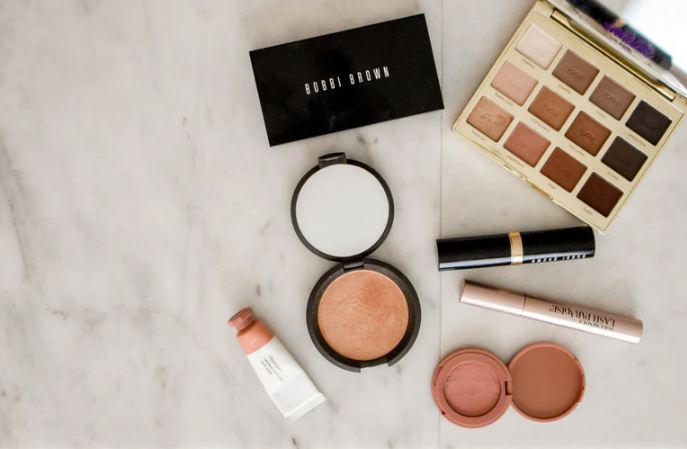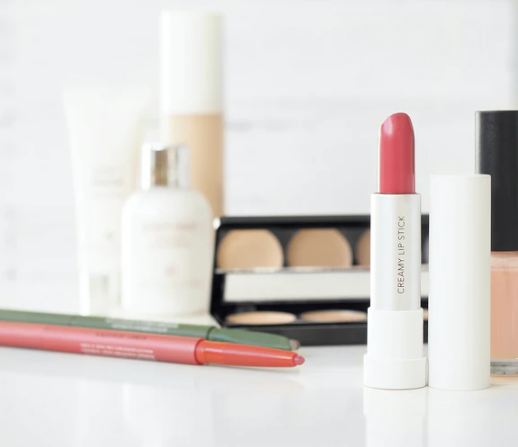Mineral Make-up isa form of make-up that consists of compressed minerals. Most of these products contain pure minerals and does not have any wax or oil additives. There’s a claim that applying mineral cosmetics can have beneficial health results for the skin, combined with the beautifying effect of the make-up itself. Although applying mineral make-up directly on the skin is said to have health benefits, it also inspired some scientific controversy. In fact, some of these mineral make-ups were proven to be poisonous and unhealthy to the skin, especially Lead and other minerals like Bismuth,which can cause a negative reaction to the skin. Nevertheless, some of the minerals used in modern make-up products are not harmful to the skin.
Where does the Mineral Make up came from?
Back in the 1970s, mineral make-up had its first-ever commercial. However, earlier than that, the history of this type of make-up is as ancient as the human’s desire to look beautiful. In fact, the mineral make-up is said to be the return to technology that had been used in ancient times. Also, people in the earlier eras have already used some ground natural minerals in order to hide or camouflage some skin discolorations and blemishes. However, sometimes, mineral make-ups were used for protection. For instance, Cleopatra’s kohl eyes not only enhance her beauty but also serves as eye protection since the make-up she used contains lead salts.
In 1976, a cosmetic chemist named Diane Ranger founded ‘Bare Escentuals.’ Later on, she had also started another mineral line, the Colorescience Pro. According to her, she marketed the concept of mineral make-up because she felt that there is a need to look and feel natural using a mineral make-up. Subsequently, years after that, the number of women who identified themselves as having sensitive skin had increased. Additionally, traditional heavy make-ups were then discarded.
What’s Inside the Mineral Make-Up?
Minerals like micronized, milled, or ground talc, zinc, titanium oxides, and iron oxide are sometimes used to create the mineral make-ups you’re seeing in a cosmetic store. These minerals were micronized into a variety of levels in order to create different coverage like light to medium coverage. Interestingly, products that were micronized twelve times tend to create finer particles that offer more coverage levels. In comparison to a conventional make-up formulation, mineral make-up does not generally contain oils, fragrances, and waxes. Mineral make-ups are also free of preservatives so it does not often cause irritation to skin.
In order to assure the quality of mineral make-up, one must read the label. Usually, if the label says that the product is mineral-enriched or has a mousse or liquid formulation, these make-ups may contain paraben preservatives that are used to create a smooth-textured make-up. Also, if the products are not in powdered form, it may contain moisturizers, vitamins, and antioxidants that are good for the skin.
A popular claim about the mineral make-up is that it can clear up acne or pimples. However, scientists have proven that it is unlikely for the mineral make-ups to clear up these skin problems. The anti-irritating ingredients such as zinc may be soothing to apply, but it is unlikely to cure the pimples. In addition, the lack of filler ingredients found mostly in conventional make-up may not or may result in less pore clogging. There are no actual studies regarding this. However, putting moisturizer and sunscreen, plus powdered foundation is more likely to cause pore-clogging.
Aside from the above-mentioned claim, another claim is that these mineral make-ups act as a sunscreen that protects your skin from sun damage when you are at the beach or pool. The protective ingredient is said to be zinc oxide, the white stuff you always see in your local lifeguard’s nose. Another one is titanium dioxide, which is most likely to be found in powder blends. These two ingredients were approved by the Food and Drug Administration (FDA) as a skin protectant.
Although some of these mineral make-ups contain these approved ingredients, the amount of titanium oxide and zinc oxide is not enough to protect your face against damaging ultraviolet rays. It is still suggested to use sunscreen and moisturizer.


